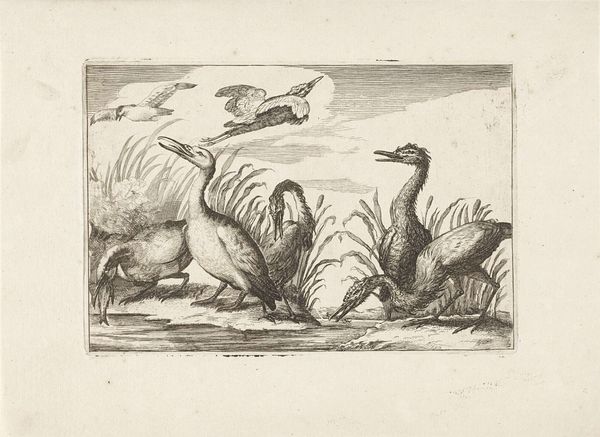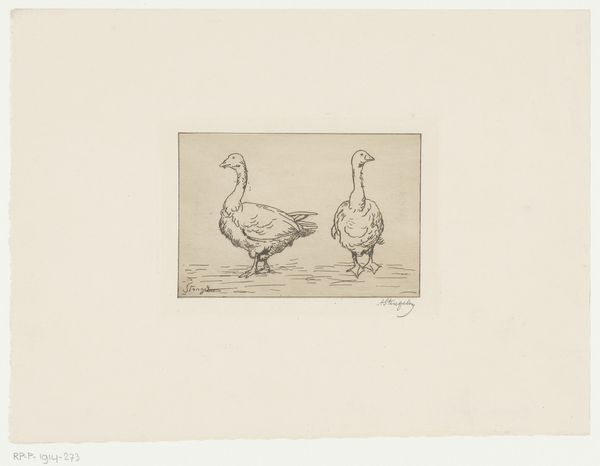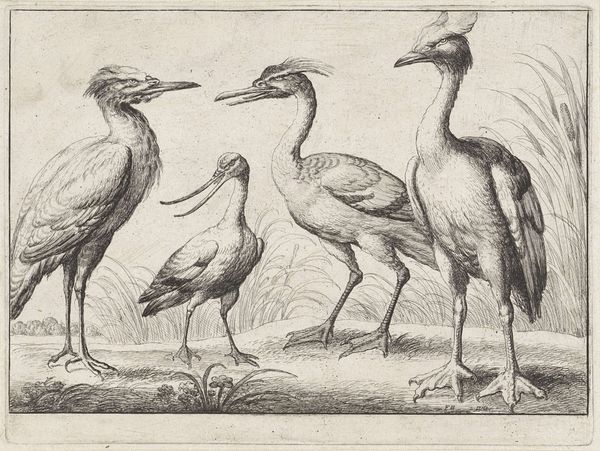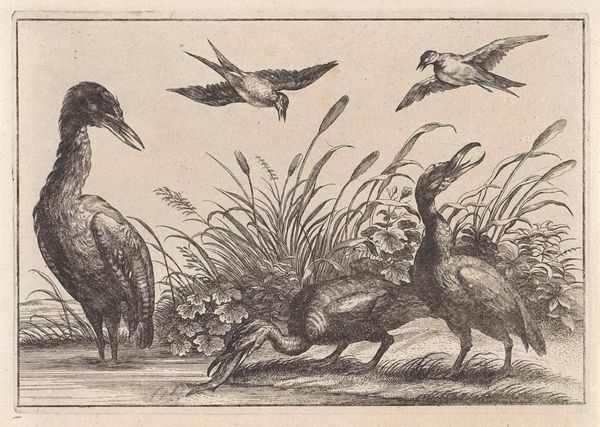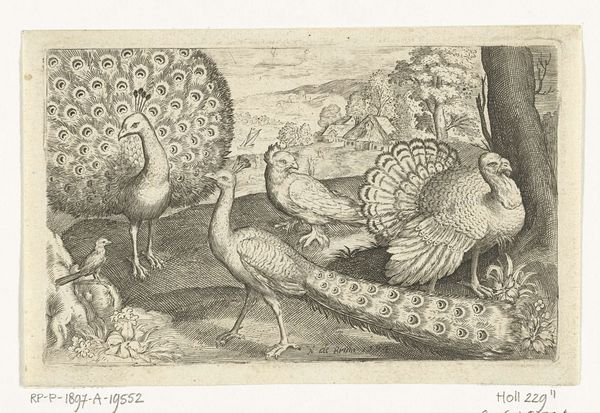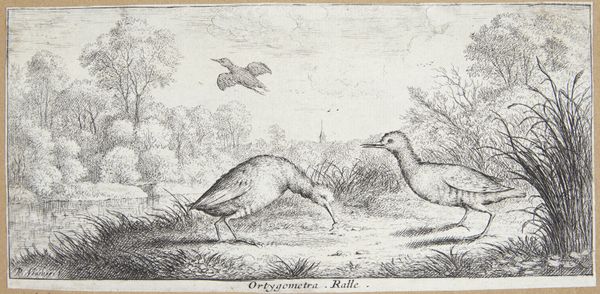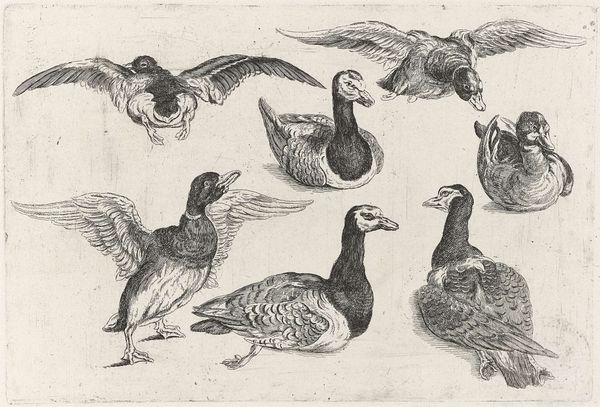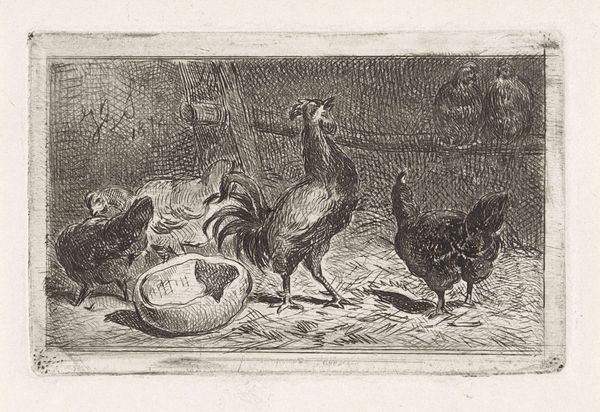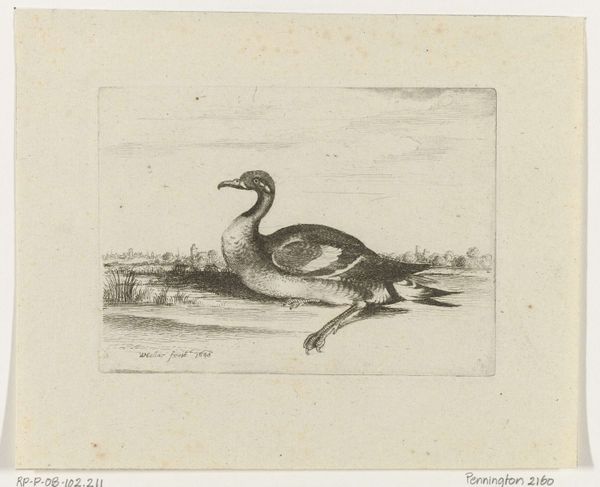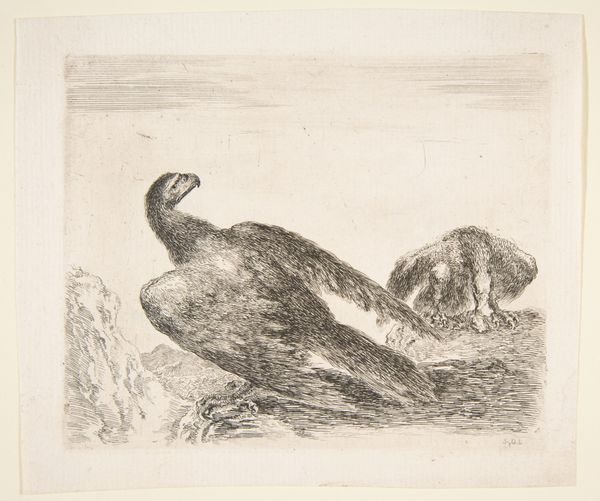
print, etching
#
baroque
# print
#
pen sketch
#
etching
#
ink drawing experimentation
Dimensions: height 102 mm, width 141 mm
Copyright: Rijks Museum: Open Domain
Editor: Here we have *Three Geese*, made around 1610 by an anonymous artist. It’s a print, an etching, and I find its casual composition quite charming. What can you tell me about it? Curator: It is fascinating to see a seemingly simple study like this through a historical lens. While ostensibly "just" geese, consider the market for prints in the early 17th century. Prints, especially etchings like this, made art more accessible. Editor: How so? Curator: Etchings allowed for relatively quick and inexpensive reproduction, shifting the power of art ownership away from the elite. Consider who would purchase a print of geese? What does it signify to have something considered mundane transformed into something worthy of art? What are your thoughts? Editor: I suppose… it makes art more democratic? Less about grand religious or mythological scenes, and more about everyday life. Curator: Precisely! This democratization coincides with burgeoning mercantile activities and a rising middle class, who sought to decorate their homes with affordable yet engaging images. The choice of subject reflects their own growing interest in, and perhaps their control of, the natural world through commerce and burgeoning sciences. Think about the symbolism of these fowl. Where they a common game bird at the time? Were the owned privately or common on farms? This impacts greatly how we should interpret it, as just decorative or potentially more charged in message. Editor: So, the accessibility of prints not only changed who *could* own art but also *what* kind of art was made? Curator: Absolutely. The print market provided artists with new avenues for patronage, enabling them to explore more quotidian subjects and experimental techniques like the pen sketches and ink drawings that informs the image before us. The “Three Geese”, therefore, marks a fascinating intersection of artistic production, social mobility, and evolving tastes. Editor: I never considered the broader social impact of printmaking before! It’s like art became more of a shared experience. Thanks! Curator: A pleasure. Now you can see art isn’t made in a vacuum. It’s constantly in conversation with culture, politics, and everyday life.
Comments
No comments
Be the first to comment and join the conversation on the ultimate creative platform.


